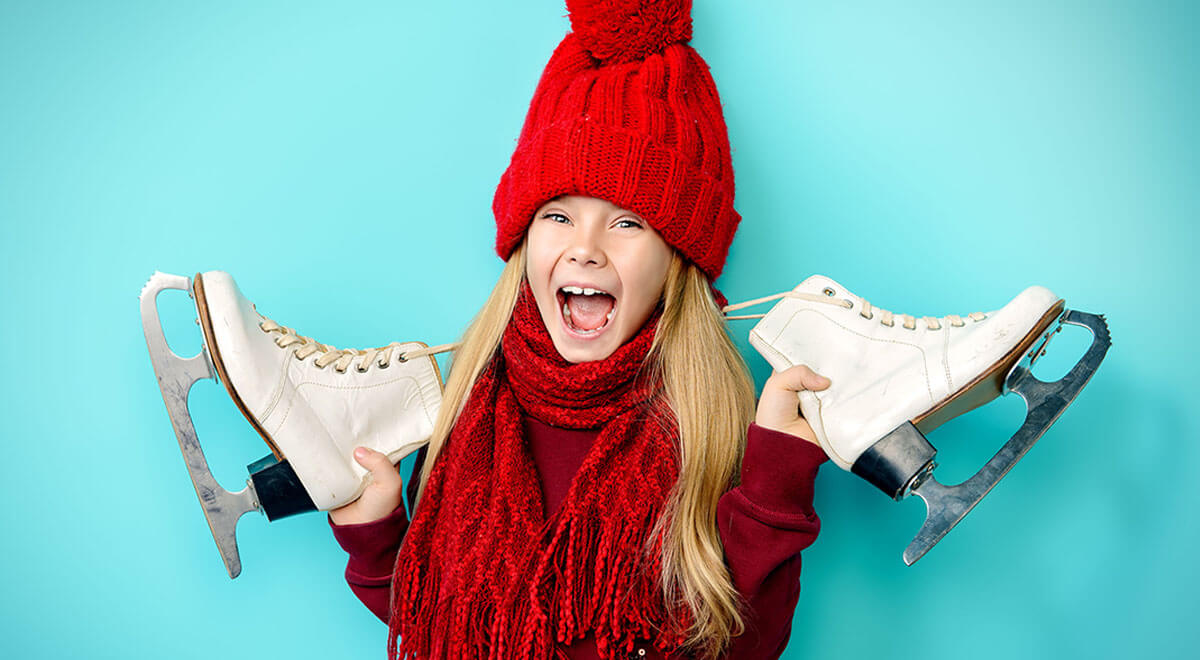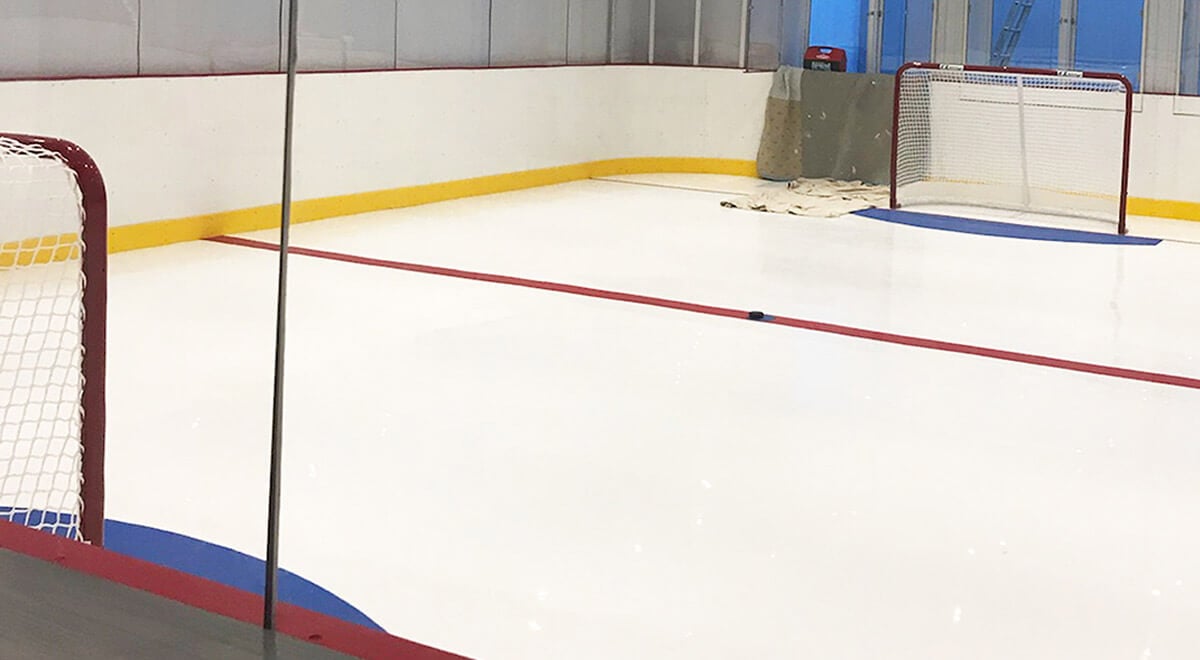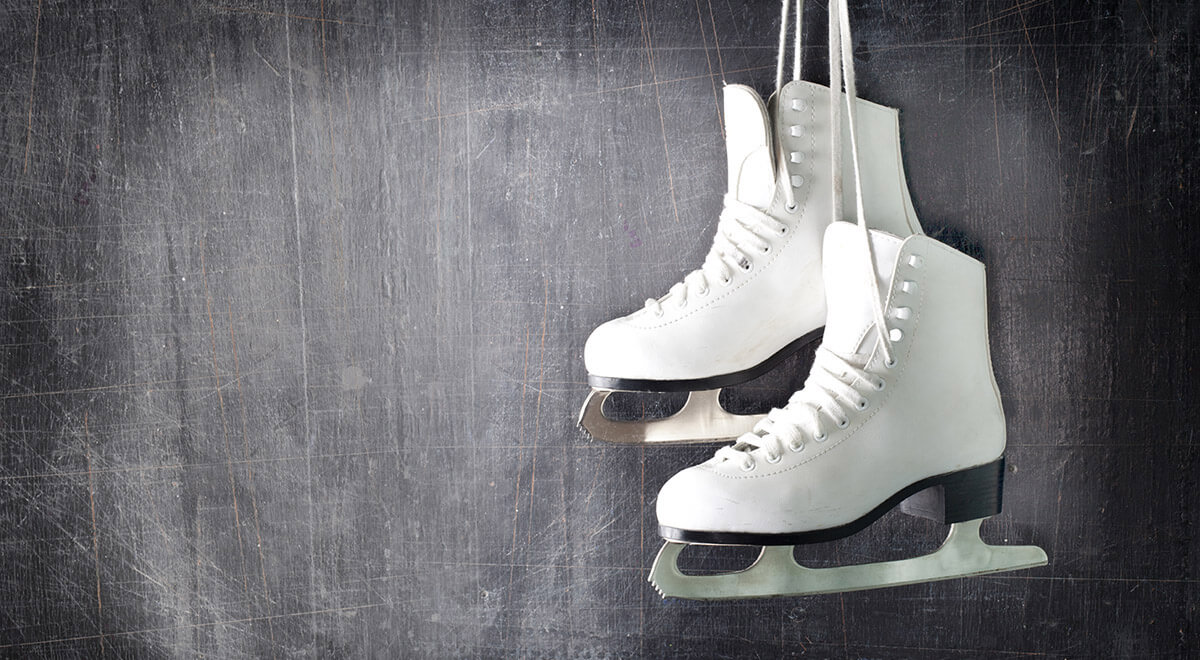Is Synthetic Ice Bad For Your Skate Blades?
If you're an ice skating enthusiast you know that keeping your skate blades sharp is always a primary concern if you want to enjoy the experience.
Whether you’re into ice hockey, figure skating, speed skating, or just skating for fun, it's important to properly maintain your gear between ice sessions.
More than 10 million Americans enjoy skating every year, but for most, it only happens during the winter season depending on where you may live.
Companies like ours solved that problem and now there are many more skate blades seeing action on both "Real" and "Artificial" Ice throughout the calendar year.
Keep Your Edges Sharp And Skate For Hours With Our Pro-Glide Infused Synthetic Ice Products!
With Polyglide Synthetic Ice, you can create your own rink and enjoy the wonders of ice skating anywhere, anyplace and skate at any time.
Every year, we get bombarded with the same major (good) question from avid skaters; is synthetic ice bad for your skate blades?
We’re going to clear up any concerns and help you keep your skates in tip-top shape so you can enjoy ice skating on both natural AND synthetic ice surfaces.

What is Synthetic Ice?
To start, it's important to better understand more about the great new advancements that have taken place in the synthetic ice industry.
Synthetic Ice is made of a solid polymer material that’s manufactured to create an alternative option to skating on natural ice without the need for electricity OR Mother Nature.
The ‘ice’ comes in customizable panels and smaller tiles that connect together to create a surface that’s suitable for ice skating virtually anywhere on the planet.
We here at PolyGlide Ice have engineered a synthetic ice surface with a special "Hybrid" blend of polymer that offers the ideal skating experience that’s similar to skating on natural ice.
Our panels are long-lasting and actually improves and gets better with age while you continue to break-in and skate on the surface.
There are no special blades or ice skates required to skate on synthetic ice other than regular hockey or figure skates.
With PolyGlide Ice you can use the same metal blades and skates that everyone uses on natural ice AND perform all the same skating maneuvers.

Will Synthetic Ice Damage My Skate Blades?
While there are inexpensive, entry-level skates, most high-quality ice skates perform perfectly on synthetic ice.
There's really no difference with regards to the overall cost with regards to replacement blades and repairs when compared with skating on natural ice.
Of course, synthetic ice customers would not want the cost of replacing skates or blades to outweigh the benefits of owning your own at-home rink.
For starters, Polyglide Synthetic Ice is designed to limit the amount of dulling on your skate blade with no damage to the skate blade profile or boot.
PolyGlide ice is durable enough for all types of blades, yet smooth and slick enough to feel like the real thing.
Figure skaters and hockey players, in particular, have been using our product for many years enjoying the benefits of off-ice training and more access to invaluable ice time.
You can expect the skate blade to cause small nicks and scratches on the surface which is a completely normal result from skating throughout the lifetime of the product.
The small scratches on the surface actually reduces contact with the skate blade thus enhancing the glide once it's broken in.
That means your skates should last as long as they would have on natural ice during normal use with an occaisional extra sharpening now and again.
If you are finding that your skate blades are dull or constantly damaged on synthetic ice panels, here are some possible reasons:
1. The Quality of Synthetic Ice
If you're not getting the glide you need and your skates aren’t performing well, it could be down to the quality or type of synthetic ice surface you're skating on.
The ice should be made of a high-quality polyethylene that provides the perfect hardness and glide to complete all your skating maneuvers......without damaging your blades too quickly.
The type of synthetic ice surface you purchase impacts not only the quality of performance but the longevity of your skate blades as well.
Too hard of a surface will beat-up your skate blades much quicker and will require your skates to be sharpened more frequently in between sessions.
Expect your skate blades to create small surface cuts that cause light shavings but note that low-quality, "textured" synthetic ice surfaces create more shavings than usual.
This makes skating even more difficult and dulls your blades much quicker the more you skate on it.
Make sure to choose the right synthetic ice manufacturer.

2. The Quality of the Skate Blades
Over the years, we’ve always stressed the importance choosing the proper skate AND blades to optimize the overall performance of your synthetic ice rink.
The harder, stronger, better quality skate blades.... the longer you will maintain your skate blade edges and grip the synthetic ice.
Since the blades will encounter slightly more friction on synthetic ice the quality skate blades are of great importance to the synthetic ice skater.
The higher the quality, the better the blade....the longer you'll hold and keep your edge!
Skate blades will vary in price and quality based on the strength of the steel, brand, model and additional materials used.
Nickel-plated skates, for instance, won’t last as long on the ice and will require more sharpenings to stay sharp.
These are usually beginner skates that are fine for the short term until you're able to upgrade to a skate that will hold it's edge longer.
Others have an aluminum chassis, making them lighter and faster but not as durable on different ice types.
The highest quality (and most expensive) skate blades are made with stainless steel and hold their edge the longest.
Try going one notch up in quality if you feel your blades aren’t holding their edge long enough on your home synthetic ice rink to limit the amount of maintenance.

Choose Your Ice Wisely to limit Additional Sharpening.
The decision you make in deciding the type of surface and skates you'll be wearing will determine how much more sharpening your skate blades may need.
Natural ice has a low coefficient of friction, meaning the skater will get minimum resistance when gliding.
But as you know, even natural ice is a hard surface that will also wear down your blades if you're hard on your edges while training.
The resitance of synthetic ice is roughly between 10-15% more friction than natural ice depending on which surface you decide to purchase and whether or not it is conditioned with an enhancer.
Understand that both the hardness of the synthetic ice surface and extra friction have a direct impact on skate blade wear.
In choosing the PolyGlide Pro-Glide panel you'll find the perfect blend of surface that provides ultimate glide and performance while extending th elife of your skate blade edge between workouts.
Taking Care of Your Skate Blades
While skating on synthetic ice won’t damage your skates any more than natural ice, it’s important to take good care of your skates regardless of what surface you're training on.
Ice skates aren’t cheap as I'm sure you already know so they need attention and regular maintenance so you can maximize their use for as long as possible.
Proper care ensures the blades remain sharp throughout your entire workout so preventive maintenance goes a long way to making sure this happens.
You will also have a smoother, more enjoyable workout and make the most of your invaluable "ice time".
Here are some tips to help keep your skates in tip-top shape.
1. Invest in Blade Guards
Do you know what’s bad for ice skates?
Using them in places not made of ice.....and I know we've all been guilty of this at one time or another ;-)
Blades can easily chip or dent walking on hard surfaces thus reducing their lifespan.
Make sure to pick up a pair of blade guards to protect those babies and get in the habit of using them on a regular basis as part of your routine.
Blade guards are usually rubber or plastic, easily accessible and easy to put on.
A small investment can save you hundreds of dollars in the long run by preventing skate blade damage which can be quite costly.
Blade guards are only for the purpose of moving off the ice and then should then be removed and put in your carry bag.
Do not store your skates with the blade guards attached as they can trap moisture, which can damage your skates over time.
(Tip: Instead, invest in blade soakers which are pieces of cloth that keep the blades dry.)

2. Keeping Things Sharp
One of the most important steps any hockey player or figure skater can take is sharpening their blades.
Your skates will never be as sharp as when they first leave the sharpener and it's up to you to try to hold on to that fresh cut as long as possible.
Dull skates can literally make skating dull and are impossible to train with.
Sharp blades grip the ice better, giving a smoother, faster feel throughout your workout.
You can feel the difference, so you’ll know exactly when and how your skate blades should be sharpened to provide maximum performance.
The amount of time between sharpenings varies depending on each skaters preference and can be anywhere between a few workouts to mutilple weeks depending on the skater.
This figure always varies based on factors like skill level, weight, intensity, and how often you skate so it's important for each skater to get a good feel for their edges.
Those fun hockey stops, mutilple spins and axels can also come back to haunt you down the road if you don't make an occaisional "pit-stop" at the Pro-Shop.
3. Make Sure You Sharpen Them the Right Way.
Sharpening your blades is as much an art as it is a science which is why all skaters tend have their preferred professional or person dedicated for this job.
Hockey players and figure skaters have hollow ground blades that actually have two edges (inside & outside) with a curved, hollow center.
The size of the hollow center or radius of hollow determines both speed and control and how much you grip the ice surface.
As metioned previously, it’s best to trust your sharpening needs to a shop or skating expert, who can sharpen your blades to fit your needs so you feel more comfortable on the ice.
Ice hockey players and Figure Skaters can get their skates sharpened on an automatic machine as many are currently available on the market such as the Sparx sharpener available at PolyGlideice.com.
Figure skaters may need special attention, as each would need sharpening based on their own personal preferences.
That does not mean you can’t sharpen your skates at home as this is the preferred method by many elite players and skaters.
If you’re skilled enough, with a little time and effort you can master the craft of skate sharpening and make sure your skates are always ready to go!
There are many manual skate sharpeners on the market to pick and choose from depending on what works best for you.
All in all, I think you now understand that skates perform better on synthetic ice when properly sharpened as they are able to grip the surface better on turns and glide further while hitting your stride.
If you’re not sure about sharpening or you’re concerned about the performance and longevity of the skates you own, seek help from a professional sharpener at your local pro shop.
4. Moisture = Rust
If you’re skating on natural ice, your blades will pick up moisture as it glides through the rink which is important to wipe dry once your workout is over.
Skating on synthetic ice panels or tiles means the blades won’t be exposed to as much moisture as natural ice however there are other things you need to be made aware of.
Training on synthetic ice does not mean your skates will be totally dry after a skating session as synthetic ice rinks can also accumulate dirt, dust and shavings on a the dry surface as well.
Damp skates can develop rust which will reduce the integrity of your blades if not kept dry regardless of where the moisture comes from.
It’s tempting to throw your skates in a corner or closet after skating but you must take the extra time to dry off the skates completely with a cloth or towel.
The same when it comes to storing your gear and skates as well.
Leaving them in any space or area that develops moisture will destroy your skates.
Make sure to store your skates in a dry skate bag or compartment that is properly ventilated and allows them to dry out in a relatively short period of time.
Many professionals recommend soakers which are cloth pouches that help keep the skate blades stay dry.

5. Don’t Forget the Boots and Mount
It's important to keep in mind that your boots and mounts need just as much love as your skate blades!
Like the blades, boots and mounts should also be completely dry so you need to make the same provisions as your skate blades.
The soles have been known to develop mildew and rot due to excess trapped moisture, which can damage the skates.
Leather boots require polish to make sure they stay properly conditioned and stronger for the life of the skate.
As mentioned previously, after each synthetic ice session get in the habit of airing-out your skates to keep them dry!....we can't stress enough how you need to make this a habit!
Moisture and sweat from your feet can also damage the inside of your skates (and also cause issues with your feet).
Keep some talcum powder in your carry bag to apply to your soles when needed after drying out your skate after a workout.
Conclusion
Blades and skates naturally wear and tear with use depending how active you are on the ice.
The bottom line is there is a huge advantage to having access to additional ice time whenever you want it.
More importantly, blades are safe to use on synthetic ice and will only require some additional sharpenings.
Whether you’re skating in the driveway, backyard, or spare room, you'll quickly appreciate the benefit of having the "keys to the rink!"
To help limit the amount of worry between games or competitions the easy fix is to simply have a spare set of skates for your home synthetic ice rink.
Make sure to follow our care guidelines in choosing the right surface and gear to make your off-ice training a successful program for many years to come!
That extra investment will pay off as you begin to understand the true value of synthetic ice home training.
You’ll have a great skating experience on your synthetic ice rink and hone skills that you can take to the bigger rink which is where it will all pay off!
Take a look at some of our most popular rink packages!
PolyGlide Ice - Home Ice Tiles
PolyGlide Ice - Pro-Glide Panels
Keep on Skating!
Jim Loughran, PolyGlide Ice
www.polyglideice.com




